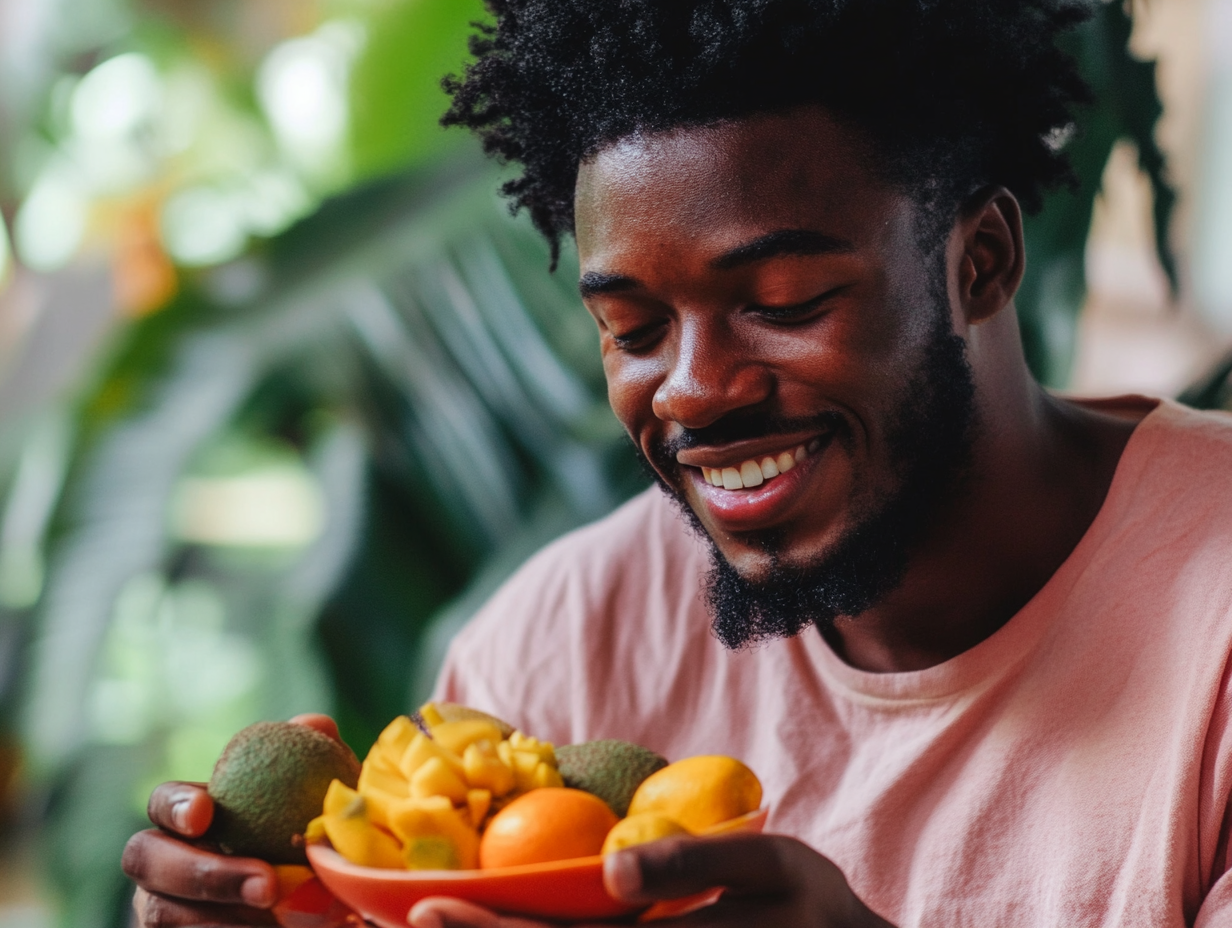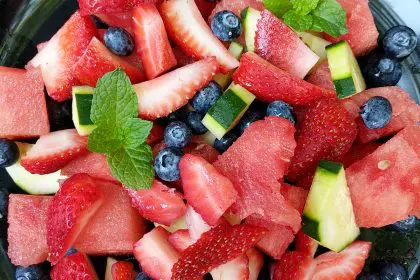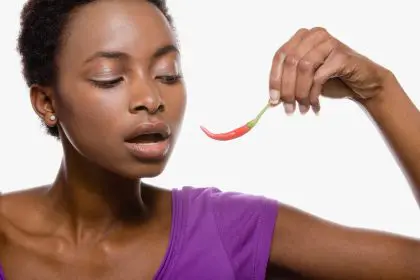That rainbow of fruits sitting in your kitchen isn’t just pretty to look at. The vibrant hues of your apples, berries, and citrus fruits are actually nature’s way of signaling what’s happening beneath the peel. While we’ve all heard the generic advice to “eat the rainbow,” few of us understand exactly why those colors matter and whether choosing one colored fruit over another actually makes a difference to our health. The answer might surprise you.
What creates those vivid fruit colors
The colors that make blueberries blue and strawberries red aren’t just there to look appetizing. These pigments are actually powerful plant compounds created for very specific purposes. Plants don’t develop these colorful compounds just to impress us at the farmer’s market. Each pigment serves a vital function for the plant itself.
Many of these colorful compounds act as the plant’s natural protection system. They shield the plant from excessive sunlight, deter pests, fight off bacterial and fungal attackers, and help the plant adapt to environmental stresses. Essentially, the more vibrant the color, the more the plant has invested in its chemical defense arsenal.
When we eat these colorful fruits, we’re essentially borrowing these protective compounds for ourselves. The same molecules that protect plants from oxidative damage can protect our cells too. The compounds that ward off insect attackers may help regulate our inflammation levels. The pigments that attract pollinators often have significant effects on our own cellular function.
The most fascinating aspect is that each color family contains different types of protective compounds. The deep blue of blueberries comes from entirely different molecules than the bright red of strawberries or the rich purple of plums. Each of these color groups affects our bodies in distinct ways.
The power palette of fruit colors
The red spectrum in fruits like strawberries, cherries, and watermelon primarily comes from compounds called anthocyanins and lycopene. Lycopene, especially abundant in watermelon, has gained attention for its potential role in reducing prostate cancer risk and protecting skin from sun damage. Anthocyanins in red fruits may help reduce inflammation and have been linked to improved heart health.
Purple and blue fruits such as blackberries, blueberries, and plums contain different anthocyanins than their red cousins. These particular compounds appear to have neuroprotective properties, potentially slowing age-related cognitive decline and improving memory function. The deep blue-purple pigments have also shown promise for supporting eye health, particularly the retina.
Orange and yellow fruits like oranges, mangoes, and pineapples get their sunny hues from carotenoids like beta-carotene and beta-cryptoxanthin, along with flavonoids. These compounds support immune function and are vital for eye health. Beta-carotene converts to vitamin A in the body, essential for night vision and maintaining healthy skin.
Green fruits such as green apples, kiwis, and honeydew melons contain chlorophyll alongside various phytochemicals. While we typically associate chlorophyll with vegetables, green fruits also contain this detoxifying compound. Green fruits often provide lutein and zeaxanthin, carotenoids that are essential for protecting the macula of the eye from blue light damage.
White and brown fruits like bananas, pears, and dates might seem less colorful, but they contain their own set of beneficial compounds including flavonoids like quercetin. These lighter colored fruits often provide significant amounts of potassium and prebiotic fibers that support heart and digestive health.
Does color intensity matter
The depth of color in fruits often correlates directly with their phytochemical content. A deeply colored blueberry typically contains more anthocyanins than a lighter colored one. A deep red strawberry generally has more anthocyanins than a partially whitened one.
This color-intensity principle explains why wild berries, which often grow under more stressful conditions, typically have deeper colors and higher antioxidant levels than their commercially grown counterparts. The challenging growing conditions prompt the plants to produce more protective compounds, resulting in more intense colors and potentially greater health benefits.
Growing conditions significantly impact a fruit’s color development and phytochemical content. Fruits grown with optimal sun exposure develop more vibrant colors and higher levels of beneficial compounds. Similarly, fruits allowed to ripen fully on the plant rather than being picked early and ripened during shipping typically develop more complete color and nutritional profiles.
Seasonal variations also affect color development. Blueberries grown during periods of temperature fluctuation often develop deeper colors and higher antioxidant levels than those grown in consistent temperatures. Even within the same variety, a strawberry harvested in early summer might have a different phytochemical profile than one harvested in late summer.
How processing affects fruit pigments
The relationship between a fruit’s color and its health benefits becomes more complicated once that fruit is processed. Many of the pigment compounds responsible for fruit colors are heat-sensitive, water-soluble, or easily oxidized.
Cooking fruits can have varied effects on their beneficial compounds. Heat breaks down cell walls, sometimes making certain compounds more bioavailable. However, extended cooking can degrade heat-sensitive compounds like vitamin C and some anthocyanins. Berries cooked into a pie may lose some of their water-soluble anthocyanins but retain other beneficial compounds.
Freezing generally preserves most color-related compounds if done properly. The rapid freezing used in commercial processing helps maintain cellular integrity, locking in many of the beneficial pigments. Frozen wild blueberries, for instance, can contain equal or even higher levels of anthocyanins compared to fresh ones, especially if the fresh ones have been shipped long distances.
Drying concentrates some compounds while potentially degrading others, depending on the drying method. Sun-dried fruits may lose more heat-sensitive compounds than freeze-dried versions. The concentrated sugars in dried fruits also mean their glycemic impact is higher, something to consider alongside their phytochemical content.
Juicing removes fiber while concentrating sugars and some nutrients. The beneficial compounds in the discarded pulp and skin are often lost in the process. A pure juice will provide different benefits than the whole fruit it came from, generally preserving water-soluble compounds while losing fiber-bound ones.
The synergy beyond color
While color provides useful clues about a fruit’s phytochemical composition, focusing exclusively on color oversimplifies the complex nature of fruit nutrition. The benefits of fruits extend far beyond their visible pigments.
Many fruits contain colorless but powerful compounds not reflected in their appearance. The bromelain enzyme in pineapples, which has anti-inflammatory properties, doesn’t contribute to the fruit’s yellow color. Similarly, the digestive enzymes in papaya and the specific phenolic acids in various fruits don’t manifest as visible colors.
The fiber content of fruits plays a crucial role in how we absorb and utilize their beneficial compounds. Fiber slows sugar absorption, feeds beneficial gut bacteria, and in some cases, acts as a prebiotic that enhances the absorption of certain phytochemicals. Two fruits with identical color profiles but different fiber contents could have very different effects on the body.
The sugar composition of fruits also varies independently of their color. Some fruits contain primarily glucose and fructose in different ratios, while others contain types of sugars like sorbitol. These differences affect how the fruit impacts blood sugar levels and how it might be tolerated by people with specific digestive sensitivities.
How to use color to optimize your fruit consumption
Rather than fixating on specific colors as “superfoods,” nutritionists recommend consuming a diverse spectrum of fruit colors regularly. Each color family offers unique benefits that complement the others, creating a more comprehensive range of nutritional support.
Instead of replacing your usual fruits with the latest colorful superfood trend, consider rotating through different color groups throughout the week. This approach ensures you receive the full spectrum of beneficial compounds while maintaining dietary variety that supports overall gut health.
Pay attention to seasonal color shifts in your fruit consumption. Winter may bring citrus fruits with their yellows and oranges, while summer provides berries with blues, reds, and purples. Following these natural seasonal color shifts not only provides fresher, more nutrient-dense fruits but also mimics the varied nutritional intake our ancestors evolved with.
When selecting fruits, choose the most vibrantly colored specimens within each type when possible. The deeper red strawberry, the more intensely purple grape, or the more brilliantly orange apricot likely contains higher levels of beneficial pigment compounds. However, minor blemishes or imperfect appearance don’t necessarily indicate lower nutritional value and sometimes suggest less pesticide use.
Consider eating some fruits with their edible skins, where much of the color and beneficial compounds are concentrated. Washing thoroughly is important, but retaining edible peels on apples, pears, plums, and even kiwis preserves valuable nutrients that would otherwise be discarded.
The vibrant colors in your fruit bowl aren’t just eye candy. They represent nature’s sophisticated pharmacy of beneficial compounds that support health in myriad ways. By understanding what these colors signify and how they work together, you can make more informed choices about the fruits you eat while appreciating the beautiful intelligence behind nature’s colorful design.















